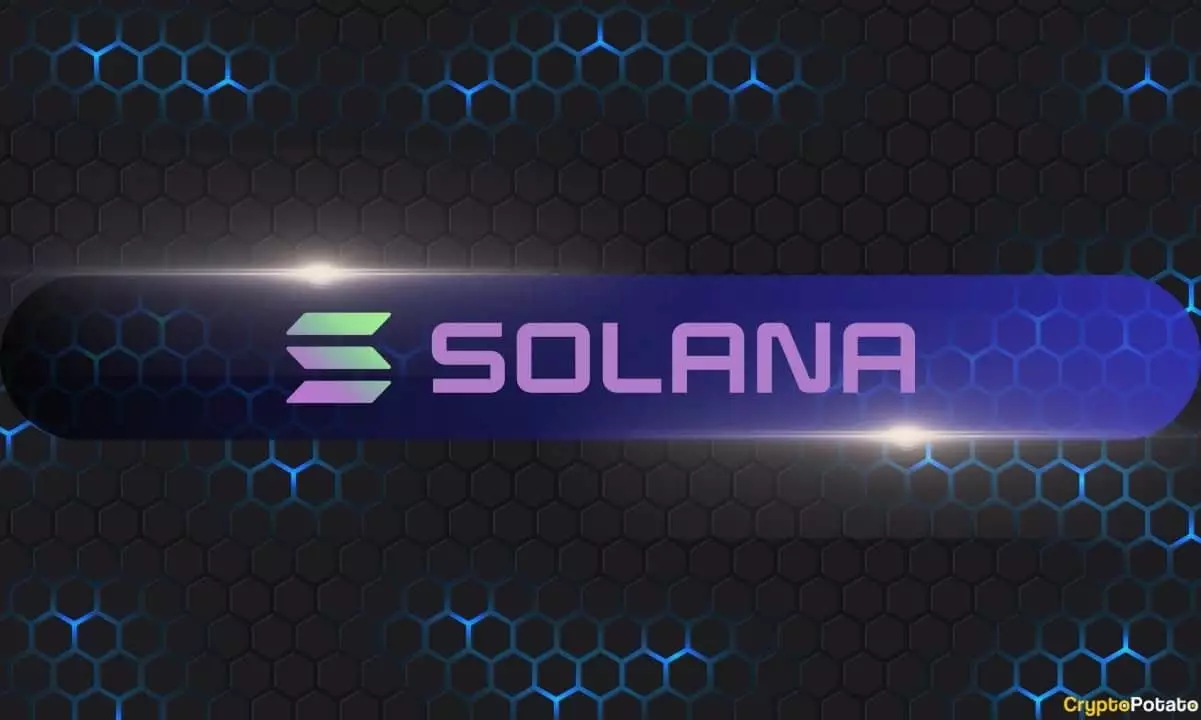The Solana blockchain has recently found itself at the epicenter of a heated debate over the credibility and sustainability of its ecosystem. Critics frequently label Solana a hotspot for speculative assets, primarily driven by the rise of meme coins and questionable trading practices. In the complex and often sensational world of cryptocurrency, such criticisms can easily overshadow the reality of the innovative technology that underpins these digital assets. While it is tempting to point fingers at Solana for its association with highly volatile meme coins, it is crucial to understand that these trends are not unique to Solana—they are rather symptomatic of broader market behaviors witnessed across the cryptocurrency landscape.
Solana’s recent uptick in transactions has coincided with the proliferation of meme coins, particularly those associated with public figures like U.S. President Donald Trump and his wife, Melania. This surge can be attributed to the newly launched tokens, such as Official Trump (TRUMP) and Melania Meme (MELANIA), which captured retail traders’ imagination. However, these ventures have also led to a series of unfortunate events. Many traders have experienced severe losses due to price manipulation, including sudden pumps and subsequent dumps tied to insider trading activities. Events such as these have fueled a narrative that frames Solana as a detrimental force in the cryptocurrency space, even prompting some to label it “the worst thing to happen” to digital assets.
Recent developments, including the launch of the LIBRA token by trader Hayden Davis, further exemplify the pitfalls of speculative trading in this environment. While the initial hype surrounding LIBRA, buoyed by an endorsement from Argentine President Javier Milei, saw its market cap soar above $4 billion, the subsequent withdrawal of support led to a catastrophic 90% drop in its value. Such volatility not only devastates retail investors but also casts a long shadow on Solana as a platform. The aftermath revealed that insiders had benefitted immensely from the situation, sparking outrage and distrust.
The fallout from the LIBRA incident has not been limited to traders; it has also implicated various platforms operating on Solana, including Jupiter and Meteora. Accusations of complicity within these platforms have led to considerable reputational damage. In this context, Meteora’s co-founder Ben Chow resigned after calls for accountability, prompting an independent investigation into the allegations. Such turmoil has exacerbated skepticism regarding the integrity of transactions on the Solana network.
In light of these events, criticism toward Solana has intensified, with many observers and developers expressing concern over the impact of a few unscrupulous individuals on the broader ecosystem. Mert Mumtaz, the CEO of Helius Labs, has vocally defended Solana, countering the argument that the actions of a minority should tarnish the reputation of an entire network. In a statement made on social media platform X, he lamented the unfair generalization of blame, asserting, “You framed thousands of honest builders for the actions of a few scumbags.” This sentiment underscores the tension between innovation and malfeasance in decentralized networks.
Despite the barrage of negative press, there’s more to the Solana blockchain than just transient meme coins. Mumtaz has attempted to redirect the focus towards the various genuine innovations that thrive within this ecosystem. Applications in areas such as decentralized GPU rendering, confidential payments, tokenized real estate, and on-chain governance are just a few examples of significant advancements being made. Yet, inherent challenges exist in maintaining the balance between fostering a thriving community of builders and protecting the network from value extractors—those who exploit the system for personal gain.
Criticism directed at Solana is not unprecedented; history offers parallels to the plight of Ethereum during the Initial Coin Offering (ICO) boom of 2017. At that era, Ethereum faced substantial backlash after it became apparent that a remarkable percentage of ICOs were fraudulent schemes, with projects like BitConnect exploiting investors to the tune of billions.
As Solana navigates these turbulent waters, it is essential to differentiate between the shortcomings of specific projects and the fundamental promise of blockchain technology. While meme coins and speculative activities have raised legitimate concerns, they do not define the entirety of Solana’s potential. The challenge moving forward will be to create an environment that nurtures innovative projects while safeguarding investors from predatory practices. Ultimately, the evolution of Solana, like that of other blockchain platforms, will hinge upon its ability to adapt, regulate, and cultivate a robust ecosystem that prioritizes value creation over extraction, paving the way for a healthier digital asset landscape.















